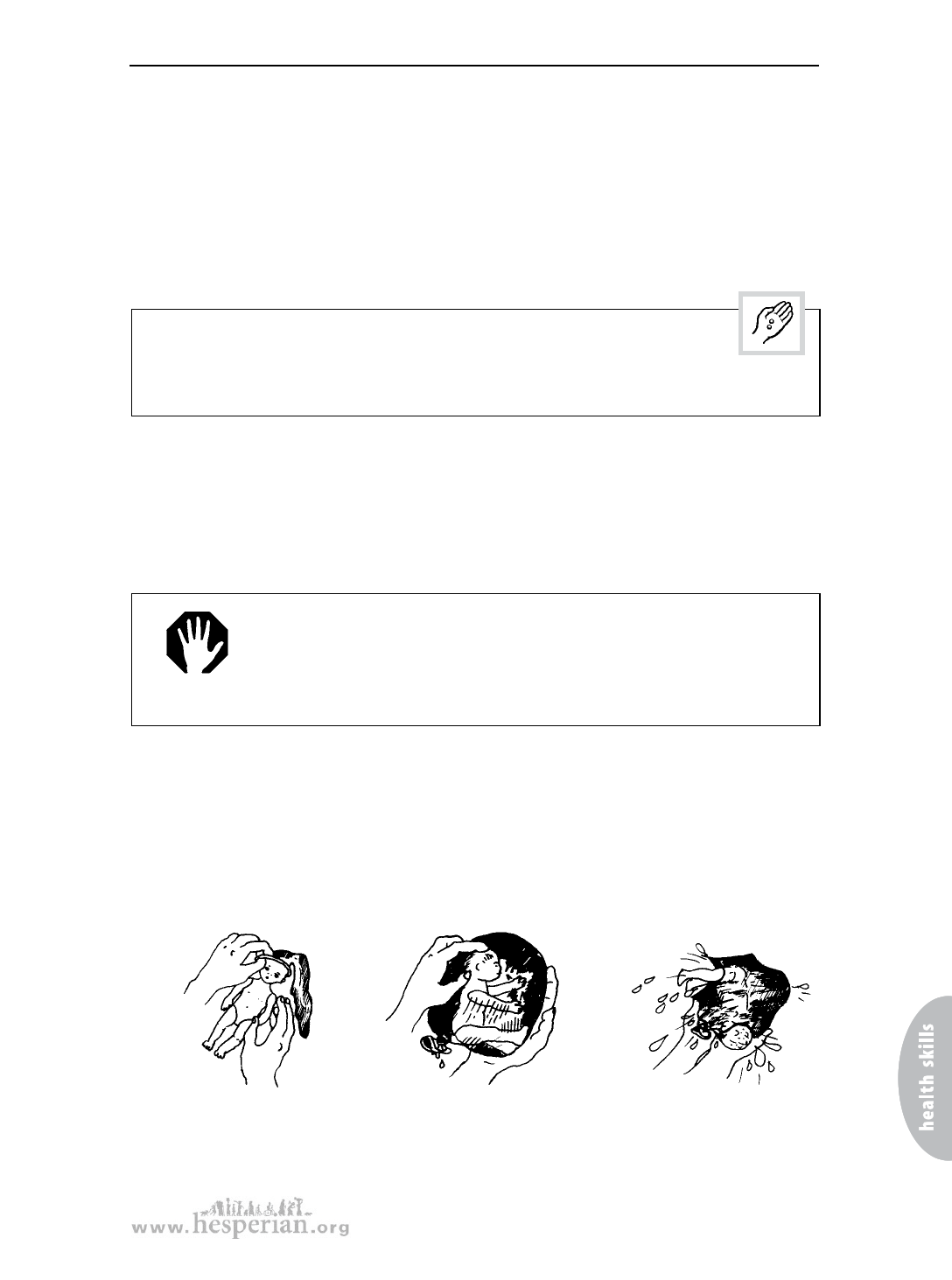
Turning a breech or sideways baby
What to do for infection
• Keep watching for warning signs of tetanus and shock. If she has not yet had
a tetanus vaccination, she should get one immediately (see page 411).
• Give modern or plant medicines for pain.
• Keep the genitals very clean. Wash them with water that has been boiled and
cooled and has a little salt in it.
• Give an antibiotic, such as amoxicillin or erythromycin.
For infection from female genital cutting
• give 500 mg erythromycin ������������������������������������������������by mouth, 4 times a day
for 10 days
Turning a breech or sideways baby
A baby is much safer if he is born head first instead of breech (bottom first).
A baby lying sideways cannot be born vaginally. If you have been trained to do so
safely, there may be times when you could turn a baby so that his head is down.
WARNING! Turning a baby has many serious risks. The biggest
dangers are pulling the placenta off of the wall of the womb or
tearing the womb. These can kill the baby and the mother.
Turning a baby can also start labor.
Only turn a baby if:
• you have been trained to do so by someone with experience.
• you can get medical help if you need it.
• you are sure the baby is breech or sideways.
To see the danger of turning the baby:
Try putting a small plastic doll
inside a small balloon or plastic
bag and filling it with water.
Then try to
turn the doll.
The womb, like the balloon,
can tear easily if not handled
with extreme care.
369
A Book for Midwives (2010)